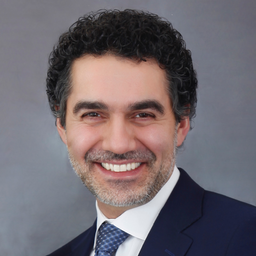Greater Reduction in Hard Exudates With Faricimab vs Aflibercept in Patients With DME: Biomarker Results From the Phase 3 YOSEMITE/RHINE Trials - 5732
My Session Status
Author’s Disclosure Block: Nirojini Sivachandran: Roche, Employment/honoraria/consulting fees, Bayer, Employment/honoraria/consulting fees, Apellis, Employment/honoraria/consulting fees; Stela Vujosevic: Consultant: AbbVie/Allergan, Apellis, Bayer, Boehringer Ingelheim, Novartis, Roche, ZEISS; Christiana Dinah: Consultancy: AbbVie, Apellis, Boehringer Ingelheim, Janssen, Ora, Roche; Lecture Fees: Apellis, Roche, Topcon; Institution Grants: Apellis, National Institute for Health and Care Research, Roche, Topcon; Roger Goldberg: Research Grants: AffaMed, Allergan, Annexon Biosciences, Apellis, Boehringer Ingelheim, EyePoint, Genentech, Inc., Janssen, Neurotech, Novo Nordisk, Unity, ZEISS; Consultant: Allergan, Annexon Biosciences, Apellis, Boehringer Ingelheim, Biogen, Coherus, EyePoint, Genentech, Inc., IrisVision, Ocular Therapeutix, Outlook, Regeneron, ZEISS; Speaker: Apellis, Biogen, Genentech, Inc.; Stock Owner: Emmetrope Ophthalmics; Research Grants: AffaMed, Allergan, Annexon Biosciences, Apellis, Boehringer Ingelheim, EyePoint, Genentech, Inc., Janssen, Neurotech, Novo Nordisk, Unity, ZEISS; Consultant: Allergan, Annexon Biosciences, Apellis, Biogen, Boehringer Ingelheim, Coherus, EyePoint, Genentech, Inc., IrisVision, Ocular Therapeutix, Outlook, Regeneron, ZEISS; Speaker: Apellis, Biogen, Genentech, Inc.; Stock Owner: Emmetrope Ophthalmics; Michael Ip: Consulting Fees: Alimera, Allergan, Amgen, Apellis, Clearside Biomedical, Novartis, OccuRx, Regeneron; Research Support: Biogen, Genentech, Inc., Iveric Bio, Lineage Cell Therapeutics, Regenxbio; Ehsan Rahimy: Consultant: Allergan, Apellis, Genentech, Inc., Google, Iveric Bio, Regeneron, ZEISS; Speaker: Allergan, Apellis, Genentech, Inc., Iveric Bio, Regeneron; Advisor: Sanro Health; Manuel Amador: Employee: Genentech, Inc.; Kara Gibson: Employee: Roche Products Ltd.; Carl Glittenberg: Employee: F. Hoffman-La Roche Ltd.; Andreas Maunz: Employee: F. Hoffman-La Roche Ltd.
Abstract Body
Purpose: Diabetic macular edema (DME) is characterised by increased vascular permeability and deposition of hard exudates (HE) in the retina. HE may be associated with worse visual outcomes. This exploratory analysis of the YOSEMITE (NCT03622580)/RHINE (NCT03622593) trials evaluated if dual angiopoietin-2 (Ang-2)/vascular endothelial growth factor-A (VEGF-A) inhibition with faricimab could reduce the proportion of patients with DME with HE vs VEGF inhibition with aflibercept. Study Design: YOSEMITE/RHINE were identical, double-masked, phase 3 trials evaluating the efficacy, durability, and safety of faricimab in patients with center-involving DME over 100 weeks. Methods: Patients were randomised 1:1:1 to receive intravitreal injections of faricimab 6.0 mg every 8 weeks (Q8W) after 6 initial every-4-weeks (Q4W) doses, faricimab 6.0 mg per a personalised treat-and-extend (T&E)–based regimen after ≥4 initial Q4W doses, or aflibercept 2.0 mg Q8W after 5 initial Q4W doses. Treatment intervals in the faricimab T&E arm were adjusted from Q4W to every 16 weeks based on prespecified central subfield thickness and best-corrected visual acuity criteria measurements at active dosing visits. The presence of HE was evaluated by a central reading centre
using colour fundus photography within the ETDRS grid at the screening visit and at weeks 16, 52, and 96. Assessments of ‘definite’ or ‘questionable’ were regarded as indicative of HE. Volumetric analyses of HE on OCT will be performed using a deep learning–based algorithm. Results: In 1870 patients (faricimab Q8W, n = 626; faricimab T&E, n = 628; aflibercept Q8W, n = 616), across the 3 treatment arms, a similar proportion of patients had HE at baseline (range, 80.8–81.6%). The proportion of patients with HE decreased over time. In patients with HE at baseline, the proportions with HE at week 16 were similar between the faricimab and aflibercept treatment arms. Following patients with HE at baseline to weeks 52 and 96, fewer faricimab Q8W and T&E patients had HE vs aflibercept patients (79.0%, 75.8% vs 86.2% and 52.8%, 55.9% vs 64.5%, respectively). This corresponded to a difference of –7.2% (95% confidence interval, –12.2%, –2.2%; nominal P = 0.0058) and –10.5% (–15.6%, –5.4%; nominal P < 0.0001) for faricimab Q8W and T&E, respectively, over aflibercept at 52 weeks, and –11.7% (–18.6%, –4.8%; nominal P = 0.0013) and –8.9% (–15.7%, –2.1%; nominal P = 0.0124) for faricimab Q8W and T&E, respectively, over aflibercept at 96 weeks. Retinal segmentation and quantification of HE volume on OCT will also be presented. Conclusion: In patients with DME from the YOSEMITE/RHINE trials, a greater reduction in the proportion of patients with HE was achieved with dual Ang-2/VEGF-A inhibition with faricimab vs aflibercept. These findings may reflect improved vascular stability with dual Ang-2/VEGF inhibition with faricimab, as demonstrated in other biomarker analyses.
